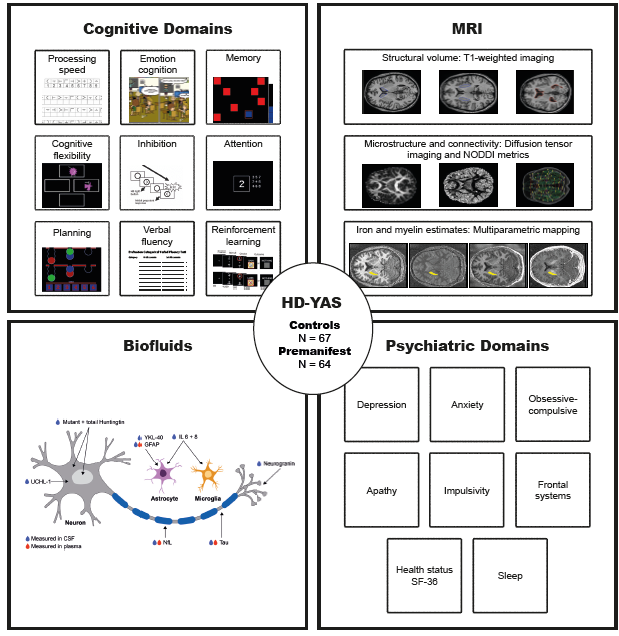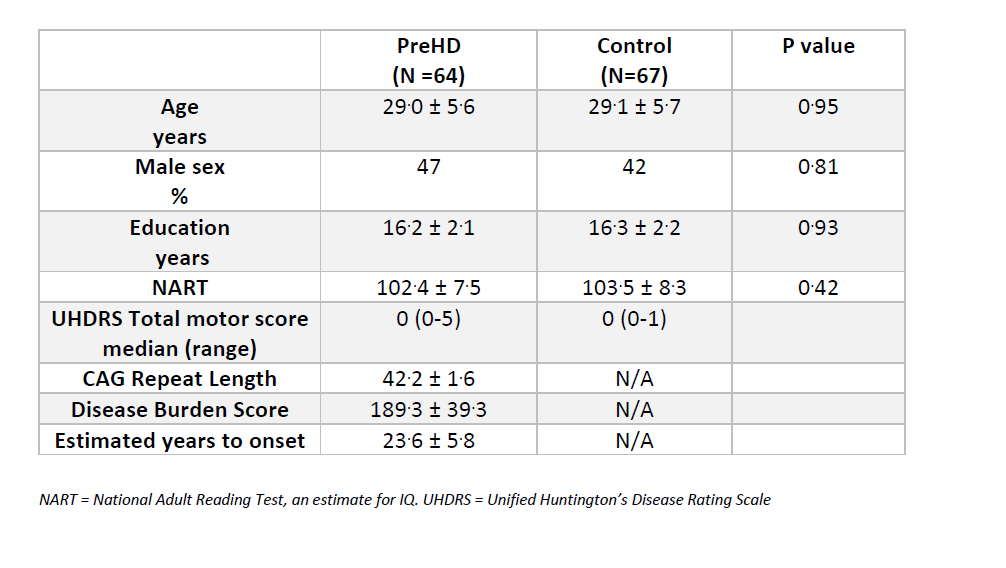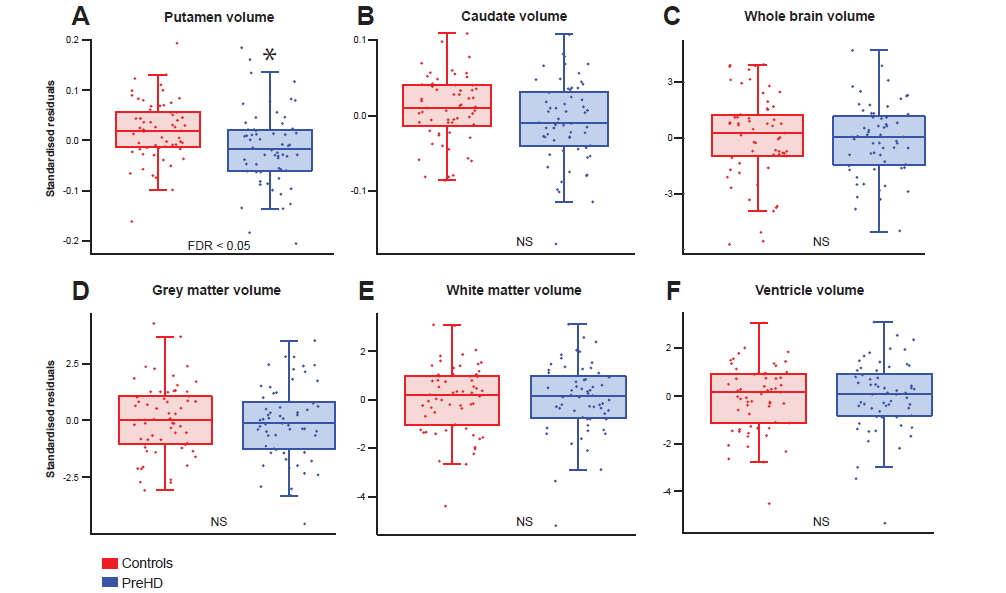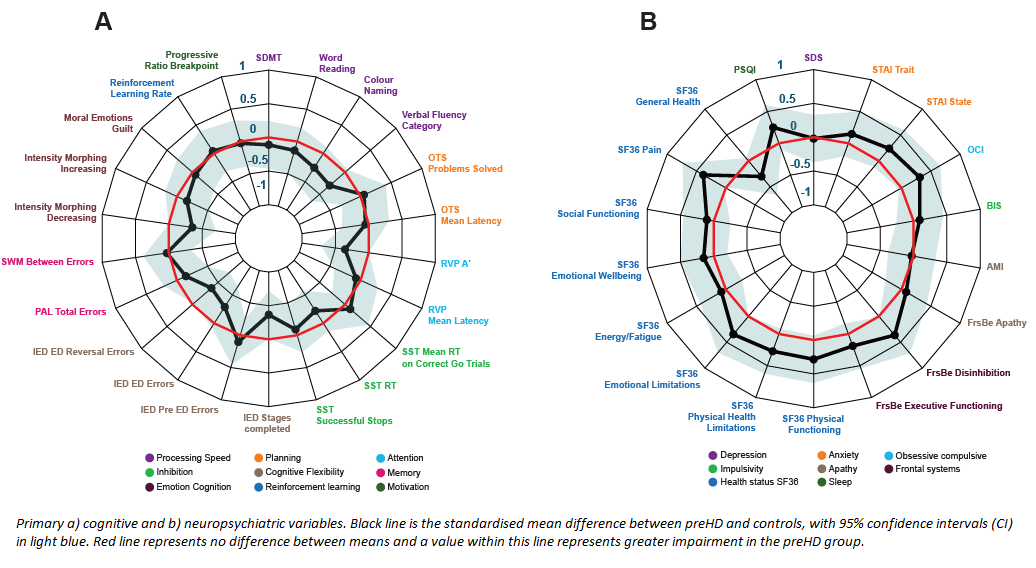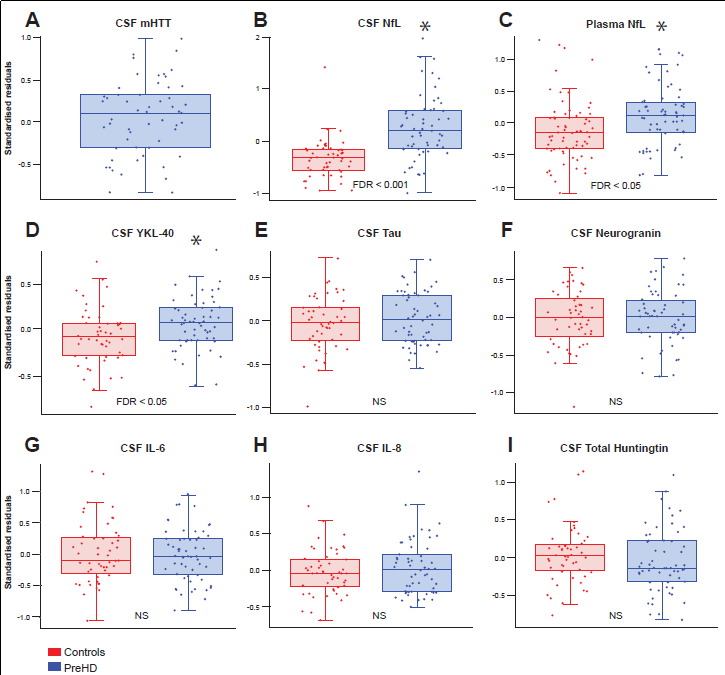Category: Huntington's Disease
Objective: To perform a deep phenotyping of a Huntington’s Disease (HD) cohort further from onset than previously studied to establish when disease related markers first become detectable and the best measures that may be used as endpoints in future trials in early premanifest HD.
Background: Crucial to the future success of disease modifying treatments for Huntington’s disease is identifying a timepoint where there are measurable biomarkers of early neurodegeneration without detectable changes in clinical function. We aimed to identify this timepoint and the best measures that may be used for endpoints for future therapeutic trials.
Method: HD-YAS (the Young Adult Study) recruited 64 young adult preHD, approximately 24 years from predicted clinical onset, and 67 matched controls. All participants underwent detailed cognitive and neuropsychiatric assessments, multi-modal imaging and collection of blood and cerebrospinal fluid (CSF). A cross-sectional analysis was performed using general least-squares linear models to evaluate group differences.
Results: We found no significant evidence of cognitive or psychiatric impairment in our cohort of preHD ~24 years from predicted onset (minimum False Discovery Rate (q) >0.22)). The PreHD cohort had slightly smaller putamen volumes (q=0.03), but this did not appear closely related to predicted years to onset. There were no group differences in other brain imaging measures (q>0.16). CSF and plasma neurofilament light (NfL) (q<0.0001 and q=0.01) and YKL-40 (q=0.03) were elevated in this far from onset preHD cohort. NfL elevations were more likely in individuals closer to expected clinical onset.
Conclusion: With normal brain function but with sensitive measures of neurodegeneration starting to rise, this stage of preHD ~24 years from predicted onset represents an optimal time to initiate future disease-modifying prevention treatments. CSF NfL appears more sensitive than plasma NfL to monitor treatment response. Although preHD had smaller putamen volumes, the small effect size and lack of association with years to onset would limit the utility of this measure in clinical trials at this stage. This is the earliest cohort yet studied in premanifest HD and interventions at this timepoint may offer the best prospect of delaying or preventing further neurodegeneration whilst function is intact.
To cite this abstract in AMA style:
P. Zeun, R. Scahill, K. Osborne-Crowley, E. Johnson, S. Gregory, C. Parker, J. Lowe, A. Nair, C. O'Callaghan, C. Langley, M. Papoutsi, P. McColgan, C. Estevez-Fraga, K. Fayer, H. Wellington, F. Rodrigues, L. Byrne, A. Heselgrave, H. Hyare, C. Sampaio, H. Zetterberg, H. Zhang, E. Wild, G. Rees, T. Robbins, B. Sahakian, D. Langbehn, S. Tabrizi. Biological and Clinical Manifestations of Huntington’s disease in Gene Carriers Very Far from Predicted Onset: The Young Adult Study [abstract]. Mov Disord. 2020; 35 (suppl 1). https://www.mdsabstracts.org/abstract/biological-and-clinical-manifestations-of-huntingtons-disease-in-gene-carriers-very-far-from-predicted-onset-the-young-adult-study/. Accessed April 26, 2025.« Back to MDS Virtual Congress 2020
MDS Abstracts - https://www.mdsabstracts.org/abstract/biological-and-clinical-manifestations-of-huntingtons-disease-in-gene-carriers-very-far-from-predicted-onset-the-young-adult-study/

